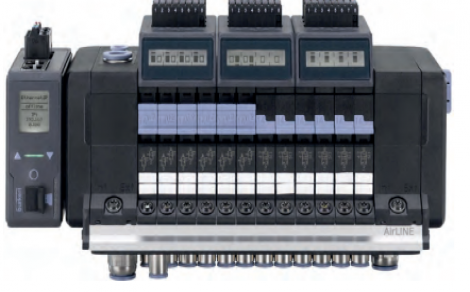Fast and simple valve actuation monitoring ensures dosing accuracy

Precise and consistent dosing accuracy ensures product quality. However, as the repeatable accuracy of valve actuation typically declines over time, monitoring valve actuation is crucial. Failure to do so can not only reduce dosing performance, it can also lead to unplanned maintenance that will impact productivity and service levels. Implementing a valve actuation monitoring system is the answer. Greg Wainhouse, Bürkert’s UK field segment manager for the water industry, explains how to monitor valve actuation rates.
Accuracy and repeatability in the dosing of liquid and gas can be an essential requirement in industries ranging from pharmaceutical production to water treatment. A lack of precision and consistency can impact product quality, which could mean over or under-filled bottles of medication, or imperfect results in bakery products. A deterioration of control can also have negative consequences on an entire process, such as balancing pH levels for drinking water.
Repeatable process control
The control of process valves plays a vital role in ensuring accuracy and repeatability across such applications. The valves are driven by pneumatic pressure, and if the pressure level changes, or if the valve is damaged or impeded, actuation time can change. Excess pressure or valve wear can mean faster actuation that will reduce dosing, while a pressure drop or mechanical defect can cause slower actuation, increasing the dose accordingly. Sticky media or a build-up of bacteria can also impede valve action and corrosion of less durable third-party valves caused by using saline or aggressive liquids can also impact actuation speed.
Typically, failure to quickly identify a change in valve actuation time only becomes identifiable further down the chain, causing more serious consequences. This could result in scrappage or reduced product quality, through to forcing a halt to the process or even a product recall. Deteriorating valve action could also lead to complete process failure, causing unplanned downtime and a significant maintenance issue resulting in a loss of service or productivity.
Process monitoring
As a solution to these challenges, Bürkert’s engineers have developed the Switch Time Monitoring Function. This capability identifies deviations in valve opening and closing times to help ensure that valve performance and dosing accuracy remains at the desired level. This new feature is an integrated function within Bürkert’s Type 8652 AirLine valve island for process automation applications. If valve actuation time deviates beyond a pre-set level, the system displays a notification. Maintenance teams can then investigate the deviation and rectify the situation before it impacts product quality or develops further and causes valve failure or a system breakdown.
The Switch Time Monitoring Function measures the time taken for the process valve to complete its full actuation, starting from the time the pilot valve delivers the pneumatic air. At commissioning, valve actuation speeds are set at their desired level and the valve island’s time switching function monitors and logs the average actuation time over a user-controlled number of actuations. When the pilot valve is opened, a timer receives feedback from the process valve. This time value is then stored in the program memory and a deviation rate, which can be adjusted accordingly to greater or lesser sensitivity, is also set. If valve actuation time changes, faster or slower, beyond the set maximum permissible percentage, a notification is signalled.
-
PPMA 2025
23 September, 2025, 9:30 - 25 September, 2025, 16:00
NEC, Birmingham UK -
Advanced Engineering Show 2025
29 October, 2025, 9:00 - 30 October, 2025, 16:00
NEC, Birmingham UK










